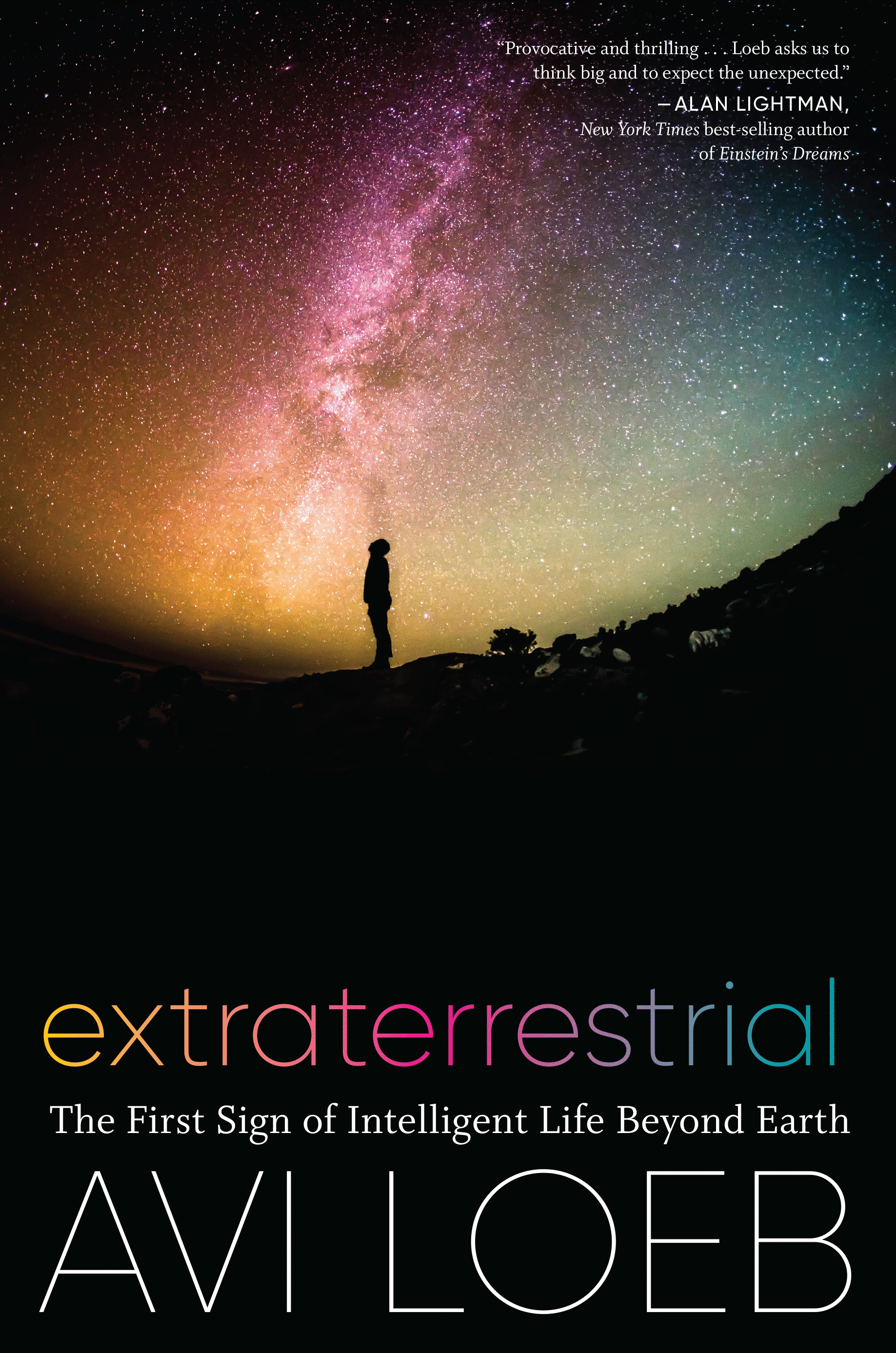
A colleague of mine once noted that every morning there is a long line of customers stretching out from a famous Parisian bakery into the street. "I wish someone would wait for my scientific papers with as much anticipation as Parisians eagerly stand by for their baguettes," he said.
There is one exception to this wish, however. It involves fresh scientific evidence that we are not be the only intelligent species in the cosmos.
Recently, there have been two sources for such evidence.
First, the interstellar object discovered in 2017, 'Oumuamua, was inferred to have a flat shape and seemed to be pushed away from the sun as if it were a lightsail. This "pancake" was tumbling once every eight hours and originated from the rare state of the local standard of rest—which averages over the motions of all the stars in the vicinity of the sun.

Avi Loeb is author of "Extraterrestrial: The First Sign of Intelligent Life Beyond Earth" (HMH, 2021).
Second, the Pentagon is about to deliver a report to Congress stating that some unidentified aerial phenomena (UAP) are real but that their nature is unknown. If UAP originated from China or Russia and were a national security risk, their existence would have never been revealed to the public. Hence, it is reasonable to conclude that the U.S. government believes that some of these objects are not human in origin. This leaves two possibilities: either UAP are natural terrestrial phenomena or they are extraterrestrial in origin. Both possibilities imply something new and interesting that we did not know before. The study of UAP should therefore shift from occupying the talking points of national security administrators and politicians to the arena of science where it is studied by scientists rather than government officials.
Many or even most UAP might be natural phenomena. But even if one of them is extraterrestrial, might there be any possible link to 'Oumuamua?
The inferred abundance of 'Oumuamua-like objects is unreasonably large if they're of purely natural origin. With Amaya Moro-Martín and Ed Turner, I wrote a paper in 2009 calculating the number of interstellar rocks based on what is known about the solar system and assuming that these rocks were ejected from similar planetary systems orbiting other stars. The population of objects required to explain the discovery of 'Oumuamua exceeds the expected number of interstellar rocks per unit volume by orders of magnitude. In fact, there should be a quadrillion 'Oumuamua-like objects within the solar system at any given time, if they are distributed on random trajectories with equal probability of moving in all directions.
Breaking space news, the latest updates on rocket launches, skywatching events and more!
But the number is reasonable if 'Oumuamua was an artificial object on a targeted mission towards the sun, aimed to collect data from the habitable region near Earth. One might even wonder whether 'Oumuamua might have been retrieving data from probes that were already sprinkled on Earth at an earlier time. In such a case, 'Oumuamua's thin, flat shape could have been that of a receiver. Hence, 'Oumuamua was pushed by sunlight not for the purpose of propulsion but as a byproduct of its thin flat shape. A similar push by reflection of sunlight without a cometary tail were the traits of an artificial rocket booster that was identified in 2020 by the same Pan-STARRS telescope that discovered 'Oumuamua. This artificial object named 2020 SO was not designed to be a solar sail but had thin walls with a large surface-to-mass ratio for a different purpose.
At this time, the possibility that any UAP are extraterrestrial is highly speculative. But if we entertain this possibility for fun, then the tumbling motion of 'Oumuamua could potentially have been meant to scan signals from all viewing directions. A predecessor to 'Oumuamua could have been a craft that deposited small probes into the Earth's atmosphere without being noticed, because it visited before Pan-STARRS started its operations. Along this imaginative line of reasoning, 'Oumuamua could have arranged to appear as coming from the neutral local standard of rest, which serves as the local "galactic parking lot," so that its origin would remain unknown.
But rather than simply wonder about possible scenarios, we should collect better scientific data and clarify the nature of UAP. This can be done by deploying state-of-the-art cameras on wide-field telescopes that monitor the sky. The sky is not classified; only government-owned sensors are. By searching for unusual phenomena in the same geographical locations from where the UAP reports came, scientists could clear up the mystery in a transparent analysis of open data.
As noted in my recent book Extraterrestrial, I do not enjoy science fiction stories because the story lines often violate the laws of physics. But we should be open-minded to the possibility that science will one day reveal a reality that was previously considered as fiction.
This article was first published at ScientificAmerican.com. © ScientificAmerican.com. All rights reserved. Follow Scientific American on Twitter @SciAm and @SciamBlogs. Visit ScientificAmerican.com for the latest in science, health and technology news.
Join our Space Forums to keep talking space on the latest missions, night sky and more! And if you have a news tip, correction or comment, let us know at: community@space.com.

Professor Loeb received a PhD in plasma physics at age 24 from the Hebrew University of Jerusalem (1986) and was subsequently a long-term member at the Institute for Advanced Study in Princeton (1988-1993), where he started to work in theoretical astrophysics. In 1993 he moved to Harvard University where he was tenured three years later. He is now the Frank B. Baird Jr. Professor of Science and former chair of the department.
He also holds a visiting professorship at the Weizmann Institute of Science and a Sackler Senior Professorship by special appointment in the School of Physics and Astronomy at Tel Aviv University.
Loeb has authored nearly 700 research articles and 4 books.

